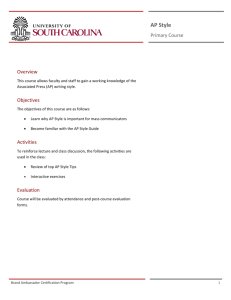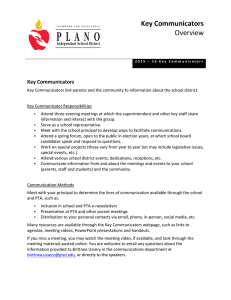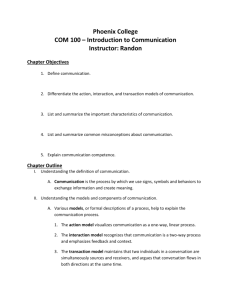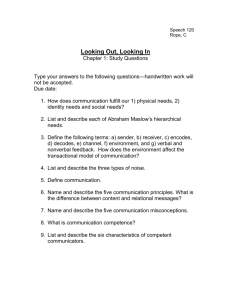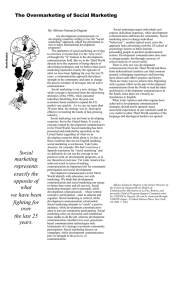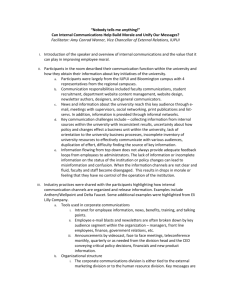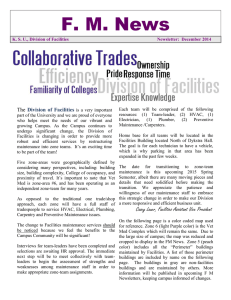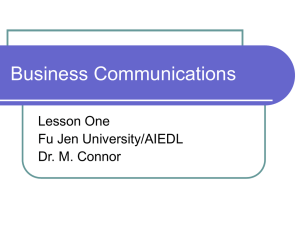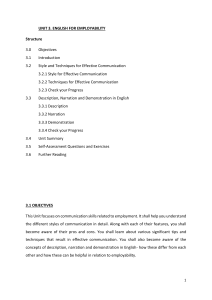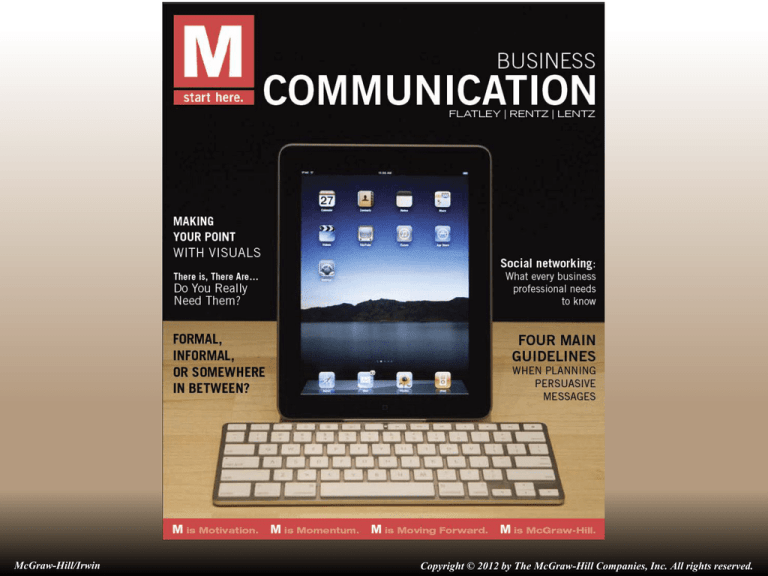
McGraw-Hill/Irwin
Copyright © 2012 by The McGraw-Hill Companies, Inc. All rights reserved.
chapter
one
Communicating in
the Workplace
“Communication is a major and essential part of business.”
1-2
Overview
• The importance of communication in business
• Current challenges
• Three main categories of business
communication
• Formal and informal communication networks
• Business communication as a form of problem
solving
• The contexts for each act of business
communication
• The business communication process
1-3
The Importance of
Communication Skills
• Ninety-four percent of over 2,000 surveyed
executives ranked “communicating well” as the most
important skill for success.
--NFI Research
• Companies included in BusinessWeek’s list of best
places to work cited communication skills the most
important trait in a job candidate—more desirable
than any other trait besides college major.
--BusinessWeek
1-4
Even More Evidence of Importance
• Employers surveyed for the Job Outlook 2009 cited
communication skills along with related traits such as
a strong work ethic, ability to work in a team, and
initiative as highly prized qualities in job applicants.
--National Association of Colleges and Employers
• Recruiters who assessed MBA programs gave
“communication and interpersonal skills” more ratings
of “very important” than any other attribute.
--The Wall Street Journal
1-5
Current Challenges for
Business Communicators
• Ongoing development of new information
technologies
• Increasingly global nature of business
• Growing diversity in the workplace and in types of
workplaces
1-6
Main Forms of Communication
in Business
• Operational
– Internal
– External
• Personal
Companies often use portals or Intranets, such as this one
at John Deere to communication with their employees.
Courtesy of Deere & Co.
1-7
Communication Networks
• Formal Network
– Well-established, usually along operational lines
– Depends on certain established forms or “genres”
in the company
– Planned and managed
• Informal Network
– Complex
– Ever changing
1-8
The Communication Networks in a Division of a
Small Manufacturing Company
1-9
Factors Affecting the
Communication in a Business
•
•
•
•
•
•
Nature of the business
Operating plan
Business environment
Geographic dispersion
People
Company culture
1-10
Business Communication
as Problem Solving
• Problems are simply a gap between where you
are and where you want to be.
• Problems range from the well defined to the ill
defined.
– Well defined problems can be solved by formulas
– Most business-communication problems are illdefined problems requiring analyzing a unique
configuration of factors to arrive at a somewhat
unique solution.
1-11
The Business Communication Process
1-12
The Contexts for Communication
• The larger context
– Business-economic
– Sociocultural
– Historical
• The relationship of the communicators
• The communicators’ particular contexts
– Organizational
– Professional
– Personal
1-13
The Bottom Line
“The goal of business communication is to
create a shared understanding of business
situations that will enable people to work
successfully together.”
1-14


